Reims Cathedral: The Evolution of a French Gothic Marvel

Introduction
Reims Cathedral, also known as Notre-Dame de Reims, is one of the most stunning examples of Gothic architecture in France. Located in the heart of Reims, this magnificent structure has played a crucial role in French history and remains a major tourist attraction. As a UNESCO World Heritage Site, Reims Cathedral stands as a testament to the artistic and architectural achievements of the Middle Ages.
The origins of Reims Cathedral date back to the early 13th century when construction began on the site of a former Romanesque church. Over the centuries, the cathedral has witnessed numerous historical events, including the coronation of French kings. Its architectural grandeur and rich history make it a must-visit destination for those interested in the cultural heritage of France.
As you explore Reims Cathedral, you will be captivated by its intricate facade, soaring nave, breathtaking stained glass windows, and significant statues. This article will guide you through a detailed tour of the cathedral’s most remarkable features, providing insights into its historical context and practical tips for visitors.
The Facade and Portals
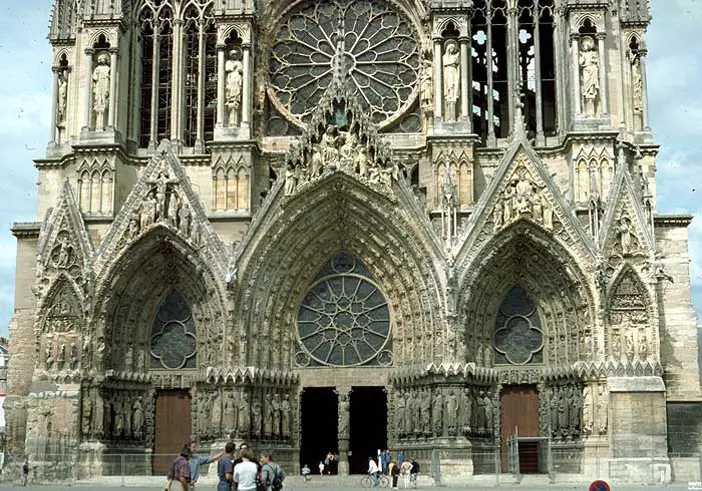
The facade of Reims Cathedral is a masterpiece of Gothic art, renowned for its elaborate sculptures and detailed craftsmanship. As you approach the cathedral, the first thing that strikes you is the sheer complexity and beauty of the facade. It is adorned with a multitude of statues, each depicting biblical figures, saints, and scenes from the life of Christ. The facade serves as a visual narrative, illustrating key moments of Christian theology.
One of the most significant elements of the facade is the central portal, which features a stunning depiction of the Last Judgment. This intricate scene portrays Christ in majesty, surrounded by angels, apostles, and the saved and damned. The detailed carvings invite visitors to reflect on themes of redemption and salvation, central tenets of the Christian faith. Flanking the central portal are the portals of the Virgin and Saint Paul, each with its own unique sculptural themes.
The facade also includes the Gallery of Kings, a row of statues representing the kings of France, which underscores the cathedral’s historical role in the coronation of French monarchs. The combination of religious iconography and royal imagery highlights the dual significance of Reims Cathedral as both a sacred and political site. Standing before the facade, visitors are not only awed by its beauty but also by the rich historical and cultural narratives it embodies.
The Nave and Ambulatory

Stepping inside Reims Cathedral, visitors are greeted by the grandeur of the nave, a vast and awe-inspiring space that exemplifies Gothic architecture. The nave’s soaring vaulted ceilings, supported by slender columns, create a sense of verticality and lightness. This architectural design draws the eyes upward, inspiring a feeling of reverence and awe. The play of light through the stained glass windows further enhances the ethereal atmosphere.
The nave is designed to accommodate large congregations, reflecting the cathedral’s importance as a religious center. It leads to the high altar, which is the focal point of liturgical ceremonies. The grandeur of the nave is complemented by the ambulatory, a semi-circular walkway that extends behind the altar. The ambulatory allows for the circulation of pilgrims and visitors, providing access to the cathedral’s numerous chapels.
The chapels along the ambulatory are each dedicated to different saints and house remarkable works of art. Among them is the Chapel of Saint John the Baptist, known for its beautiful stained glass and intricate altarpiece. The ambulatory and its chapels offer a more intimate space for reflection and prayer, contrasting with the vast openness of the nave. Together, the nave and ambulatory create a harmonious balance between grandeur and intimacy, inviting visitors to explore both the architectural and spiritual dimensions of Reims Cathedral.
The Stained Glass Windows
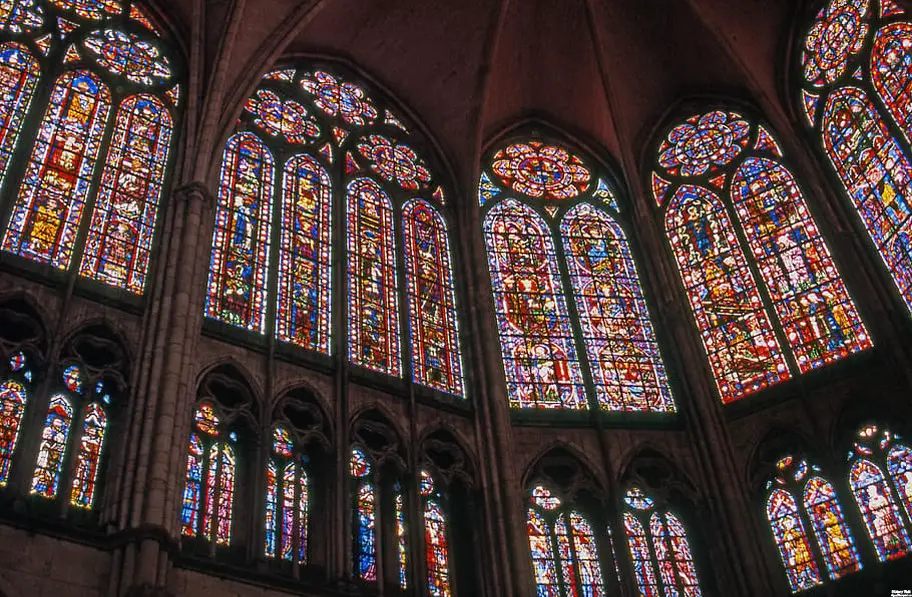
Reims Cathedral is renowned for its stunning stained glass windows, which are among the finest examples of Gothic art in Europe. These windows not only add to the cathedral’s aesthetic beauty but also serve as a medium for religious storytelling. The vibrant colors and intricate designs depict scenes from the Bible, the lives of saints, and the history of the cathedral itself.
One of the most famous windows is the rose window in the west facade, which dates back to the 13th century. This magnificent window features a central image of the Virgin Mary surrounded by a celestial hierarchy of angels and saints. The rose window’s intricate tracery and vivid colors create a mesmerizing effect, particularly when illuminated by the sunlight. It is a masterpiece of medieval craftsmanship and a symbol of the divine light illuminating the church.
Another notable example is the series of windows designed by Marc Chagall in the mid-20th century. These modern additions to the cathedral blend contemporary art with traditional themes, depicting biblical stories with Chagall’s characteristic dreamlike quality. The windows are a testament to the ongoing artistic and spiritual legacy of Reims Cathedral, bridging the gap between past and present.
Throughout the cathedral, the stained glass windows provide a continuous narrative of faith and devotion. They invite visitors to engage with the stories and symbols of Christianity in a visually captivating way. The interplay of light and color within the cathedral’s interior creates a dynamic and ever-changing environment, enriching the visitor’s experience.
The Smiling Angel and Other Statues
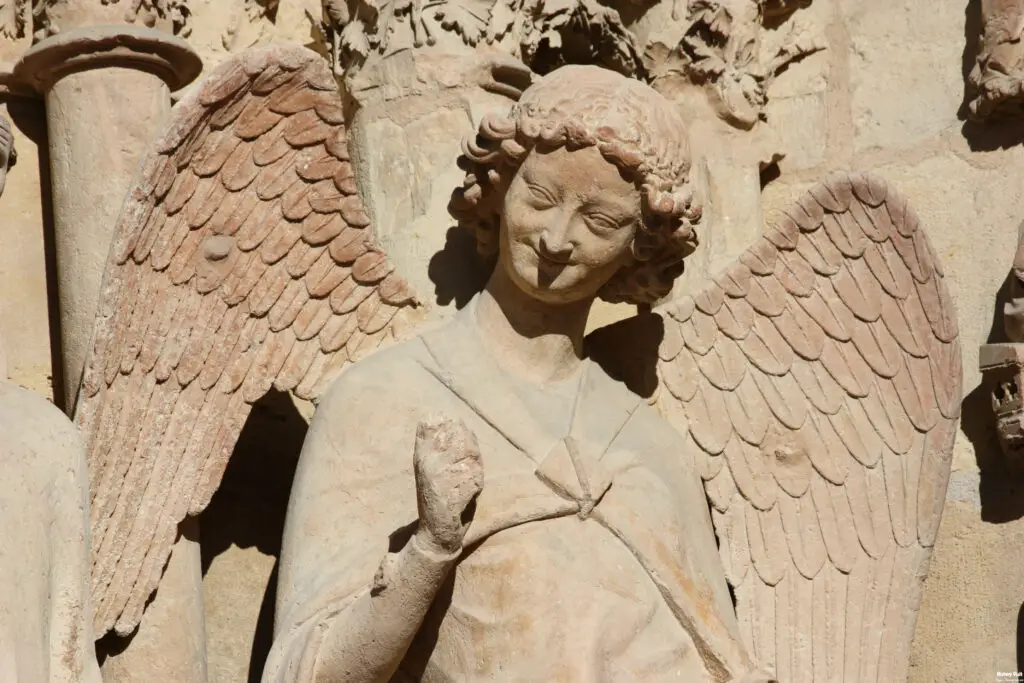
Among the many statues that adorn Reims Cathedral, the Smiling Angel stands out as one of the most beloved and iconic figures. Located on the north portal of the west facade, this statue of an angel with a serene and joyful expression has captured the hearts of visitors for centuries. The Smiling Angel symbolizes the hope and divine grace that the cathedral represents, and it has become an emblem of Reims itself.
The story behind the Smiling Angel is both historical and symbolic. Created in the 13th century, the statue was damaged during World War I, a conflict that caused significant destruction to the cathedral. The restoration of the Smiling Angel in the aftermath of the war became a symbol of resilience and recovery. Today, it stands as a reminder of the enduring power of faith and the human spirit.
In addition to the Smiling Angel, Reims Cathedral is home to numerous other statues that contribute to its rich iconographic program. The Gallery of Kings, located on the upper facade, features statues of French monarchs who were crowned in the cathedral. This gallery underscores the cathedral’s role as the traditional site for the coronation of French kings, linking it to the broader narrative of French history.
Inside the cathedral, statues of saints, apostles, and biblical figures decorate the nave, chapels, and transept. These statues are not only works of art but also representations of the spiritual and historical significance of the figures they depict. Each statue invites contemplation and offers insights into the religious and cultural context of the cathedral. Together, the statues of Reims Cathedral create a rich tapestry of imagery that enhances the visitor’s experience and understanding.
The Coronation Tradition
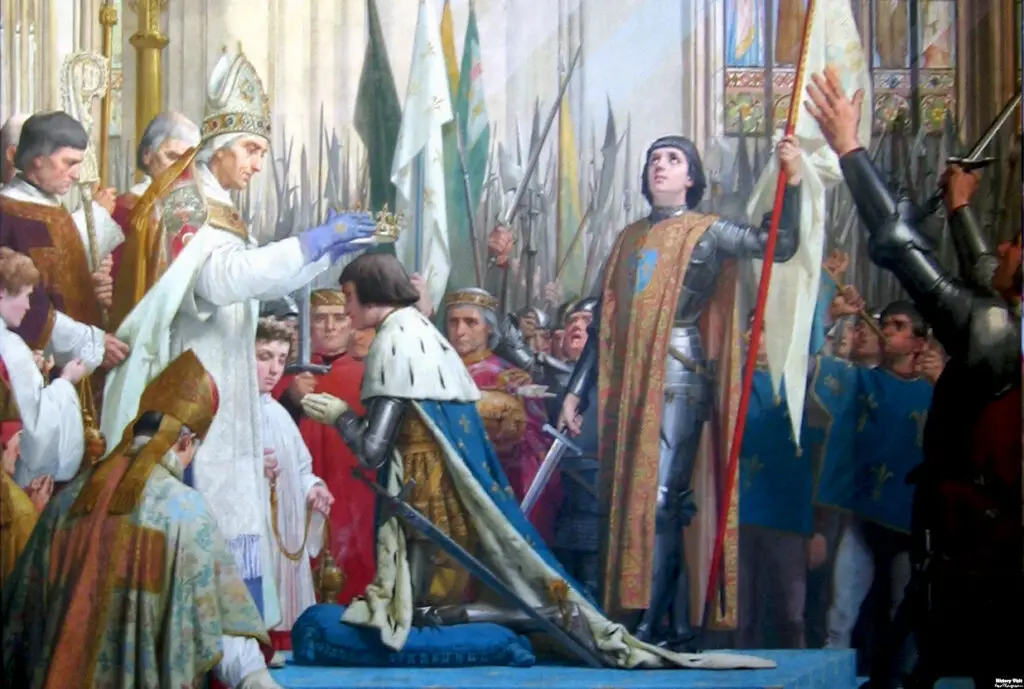
Reims Cathedral holds a unique place in the history of France as the traditional site for the coronation of French kings. This practice began with the coronation of King Louis I in 816 and continued until the coronation of Charles X in 1825. The cathedral’s association with the French monarchy has made it a symbol of royal authority and legitimacy, deeply intertwined with the nation’s history.
The coronation ceremonies at Reims Cathedral were grand and elaborate events, reflecting the significance of the occasion. The high altar, where the coronations took place, was the focal point of the ceremony. The anointing with holy oil, known as the Holy Ampulla, was a central ritual, believed to confer divine blessing and legitimacy upon the monarch. This sacred oil was said to have been miraculously supplied by a dove during the baptism of Clovis, the first Christian king of the Franks.
The architectural features of the cathedral were designed to enhance the majesty and solemnity of the coronation ceremonies. The choir, where the king was anointed and crowned, is surrounded by soaring columns and stained glass windows that create an atmosphere of grandeur and sanctity. The coronation site within the cathedral remains a place of historical significance, attracting visitors interested in the royal heritage of France.
The legacy of the coronation tradition is still evident in the cathedral today. Exhibits and guided tours provide insights into the history and significance of the coronations, allowing visitors to connect with this important aspect of French history. The coronation tradition at Reims Cathedral highlights the enduring relationship between the church and the monarchy, and its role in shaping the identity of the French nation.
Visitor Information and Tips
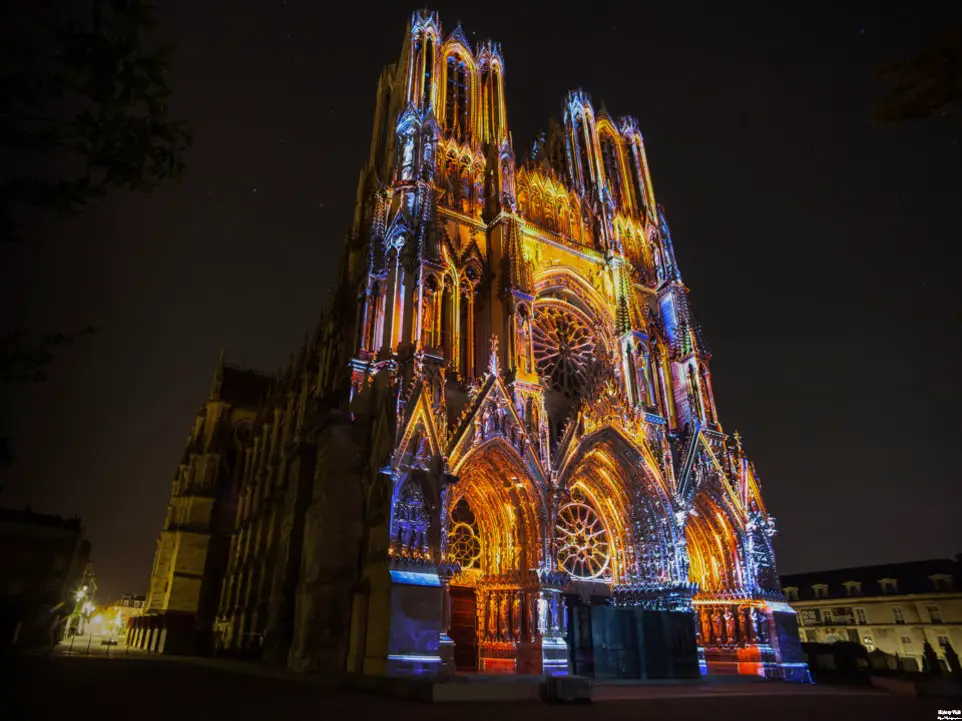
Visiting Reims Cathedral is an enriching experience, and a bit of preparation can help you make the most of your visit. The cathedral is open to the public daily, but hours may vary depending on religious services and special events. It is advisable to check the cathedral’s official website or contact the visitor center for the latest information on opening times and any potential closures.
To avoid long lines and fully appreciate the cathedral’s many features, consider purchasing tickets in advance online. Guided tours are available and provide valuable insights into the cathedral’s history, architecture, and art. Audio guides are also an excellent option for those who prefer to explore at their own pace while still gaining a deep understanding of the site’s significance.
When visiting Reims Cathedral, remember to dress appropriately as it is a place of worship. Modest clothing that covers shoulders and knees is recommended. Photography is generally allowed, but be mindful of signs indicating restricted areas and respect the sanctity of the space. Finally, take your time to explore the cathedral’s many features, from the facade and stained glass windows to the nave and chapels. Each part of the cathedral offers a unique perspective on its rich history and artistic heritage.
Conclusion

Reims Cathedral is not only an architectural masterpiece but also a living monument to the rich history and culture of France. Its Gothic splendor, historical significance, and artistic treasures make it a must-visit destination for anyone interested in the heritage of Europe. From its intricate facade and awe-inspiring nave to its beautiful stained glass windows and significant statues, Reims Cathedral offers a profound and immersive experience.
The Smiling Angel, the Gallery of Kings, and the coronation tradition all highlight the cathedral’s unique place in French history. Each visit to Reims Cathedral is a journey through time, revealing the layers of meaning and significance that have shaped this remarkable site. Whether you are drawn by its historical importance, its artistic beauty, or its spiritual resonance, Reims Cathedral provides a rich and rewarding experience.
As you leave Reims Cathedral, you carry with you a deeper appreciation for the artistic and historical legacy that it represents. The cathedral’s enduring beauty and significance continue to inspire and captivate visitors from around the world. It stands as a testament to the creative and spiritual achievements of humanity, inviting all who enter to reflect on the profound connections between art, history, and faith.


